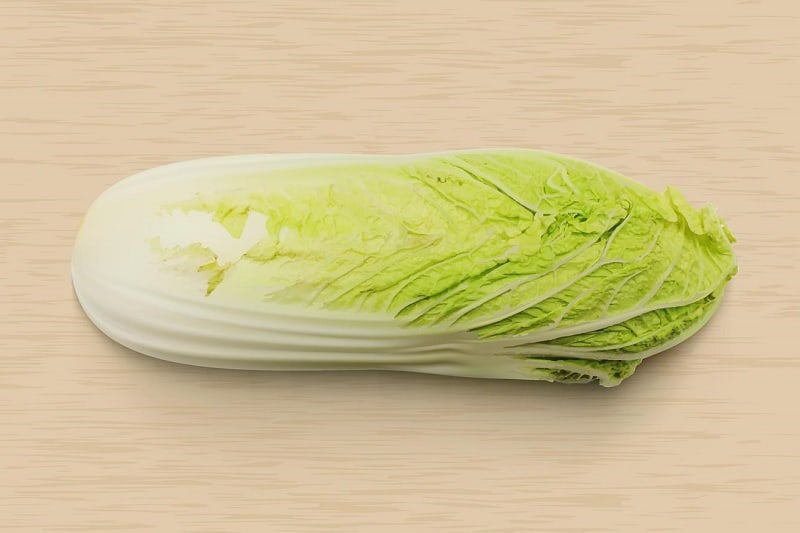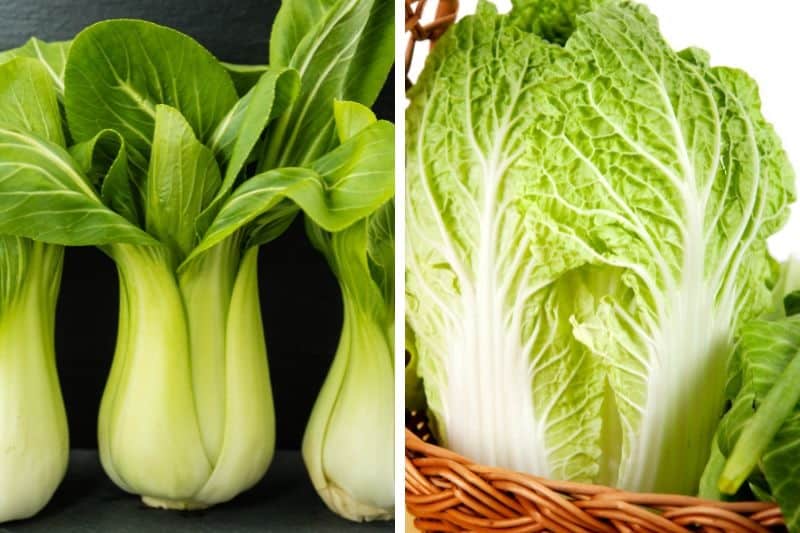Chinese leaf and pak choi are similar. In fact, in the plant world, they are practically siblings. But they are not the same. The two Asian ingredients differ from each other slightly.
Pak choi is commonly used in the same way as cabbage, spinach, and other green, leafy vegetables.
The younger, crunchier leaves are great for adding to sandwiches and salads, with the older leaves bringing a bolder flavour, often described as mustard-like (slightly peppery).
Chinese leaf can be used in the same ways, and is also frequently seen in salads, stir fries, soups, and one-pot or hot-pot style dishes.
They both are crunchy, juicy vegetables, suitable for eating raw or cooked. They can be pickled, and you can cook them in a number of ways, including boiling, stir-frying, and steaming.
What Is Chinese Leaf?

Chinese leaf is known by a host of other names, including wombok (in Australia and New Zealand), celery cabbage, napa cabbage, winter cabbage, petsai/pe-tsai, Chinese cabbage, and its botanical name: Brassica Rapa, pekinensis. It is more commonly known as Chinese leaf or Chinese cabbage.
In Cantonese, Chinese leaf is known as dai bok choy, which means “big white vegetable”.
What Is Pak Choi?

The botanical name of pak choi is Brassica Rapa, chinensis. It is also known by a host of other names, including bok choy, pok choi, and siu bok choy, which means “small white vegetable” in Cantonese.
Essentially, Chinese leaf is the big brother to pak choi.
Can Chinese Leaf and Pak Choi Be Used Interchangeably?
When you get down to the fine details, Chinese leaf and pak choi actually have few differences. They can usually interchangeable in recipes, and using one instead of the other will not change the taste or quality of a dish.
Both pak choi and Chinese leaf are packed full of good vitamins, minerals and antioxidants. These include vitamins A, C, E, and K; and calcium. The leaves are also low in calories.
The Brassica Rapa Family
The brassica rapa plant species is also home to a number of other plants, known as subspecies or varieties. These include:
- Bomdong (Brassica Rapa, glabra)
- Hoy sum (Brassica Rapa, parachinensis)
- Field mustard (Brassica Rapa, oleifera)
- Komatsuna (Brassica Rapa, perviridis)
- Mizuna (Brassica Rapa, niposinica)
- Rapini (Brassica Rapa, ruvo)
- Tatsoi (Brassica Rapa, narinosa)
- Turnip (Brassica Rapa, rapa)
- Yellow sarson (Brassica Rapa, triloularis)
They are all from the same plant family and are related, but they are all different.
Pak choi looks very different to turnips, and field mustard looks different from both of them. Field mustard is used to make canola oil.

Kim is a writer with more than a decade of experience, and a food enthusiast. When she’s not spending her time writing about her favourite dishes, you can find her in the cake aisle of her local supermarket, or making a mess in the kitchen.

